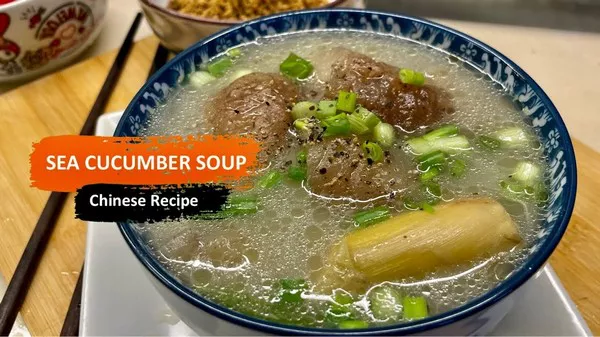Chinese Chicken and Corn Soup is a comforting, velvety dish that’s enjoyed across the globe. Known for its soothing texture and delicate flavor, this soup is a staple in many Chinese households and is a favorite in restaurants, including the famed “Everest” restaurant. This recipe takes inspiration from the Everest style, combining the traditional essence of the dish with subtle twists that enhance its flavor and appeal. Variations of this dish can be found in different regions of China, each adding unique ingredients or techniques to the basic recipe.
SEE ALSOA: How Long to Cook Chinese Noodles
Ingredients List
- Chicken Breast or Thighs: 200g, finely chopped or shredded
- Sweet Corn Kernels: 1 cup (fresh, canned, or frozen)
- Creamed Corn: 1 can (approximately 400g)
- Chicken Stock: 4 cups (preferably homemade for richer flavor)
- Ginger: 1-inch piece, finely grated
- Garlic: 2 cloves, minced
- Soy Sauce: 2 tablespoons (light soy sauce preferred)
- Cornstarch: 2 tablespoons, mixed with 3 tablespoons of water (to create a slurry)
- Eggs: 2, lightly beaten
- Sesame Oil: 1 teaspoon
- White Pepper: 1/2 teaspoon (adjust according to taste)
- Spring Onions: 2, finely chopped (for garnish)
- Salt: To taste
- Optional: A dash of Chinese cooking wine (Shaoxing wine) for extra depth of flavor
Step-by-Step Instructions
Prepare the Chicken: Start by finely chopping or shredding the chicken breast or thighs. Set aside.
Cook the Aromatics: In a large pot, heat a small amount of oil over medium heat. Add the grated ginger and minced garlic, sautéing until fragrant.
Add Chicken and Stock: Add the chopped chicken to the pot and cook until it’s no longer pink. Pour in the chicken stock and bring to a gentle simmer.
Incorporate Corn: Add the sweet corn kernels and creamed corn to the pot, stirring well to combine. Allow the soup to simmer for 5-7 minutes, allowing the flavors to meld together.
Season and Thicken: Stir in the soy sauce, white pepper, and optional Chinese cooking wine. Then, slowly pour in the cornstarch slurry while stirring continuously to thicken the soup.
Add the Eggs: With the soup gently simmering, slowly drizzle the beaten eggs into the pot while stirring constantly in a circular motion. This will create delicate egg ribbons throughout the soup.
Finish with Sesame Oil: Add the sesame oil to the soup, giving it a final stir. Taste and adjust the seasoning with salt if needed.
Garnish and Serve: Ladle the soup into bowls, garnish with finely chopped spring onions, and serve hot.
Tips and Tricks
Ingredient Preparation: Pre-chop all your ingredients before starting to cook to ensure a smooth cooking process.
Timing: Keep the soup at a gentle simmer after adding the eggs to avoid overcooking them.
Flavor Adjustments: Feel free to adjust the seasoning to your preference. A bit of extra soy sauce or a dash of vinegar can add depth to the flavor.
Dietary Information
This recipe can be adapted for various dietary needs. For a gluten-free version, use tamari or a gluten-free soy sauce. The soup is naturally low in calories and can be made vegetarian by substituting the chicken with tofu and using vegetable stock.
Serving Suggestions
Serve this soup as an appetizer or as a main dish, accompanied by steamed jasmine rice or a light stir-fried vegetable dish. Garnish with fresh herbs like cilantro or additional spring onions for an extra burst of flavor.
Variations
Different Meats: Substitute the chicken with shrimp, crab, or even tofu for a different twist.
Vegetable Additions: Add finely chopped carrots, mushrooms, or baby spinach for added texture and nutrition.
Spices: For a spicier version, add a pinch of chili flakes or a dash of hot sauce.
Conclusion:
Authentic Chinese Chicken and Corn Soup is more than just a dish; it’s a representation of the deep-rooted traditions and cultural values of Chinese cuisine. Its simplicity, combined with its rich and comforting flavors, makes it a timeless favorite that has been passed down through generations. The soup’s ability to provide both nourishment and comfort speaks to the Chinese philosophy of food as a source of healing and wellness, embodying the idea that what we eat directly impacts our health.
Related Topics:


























